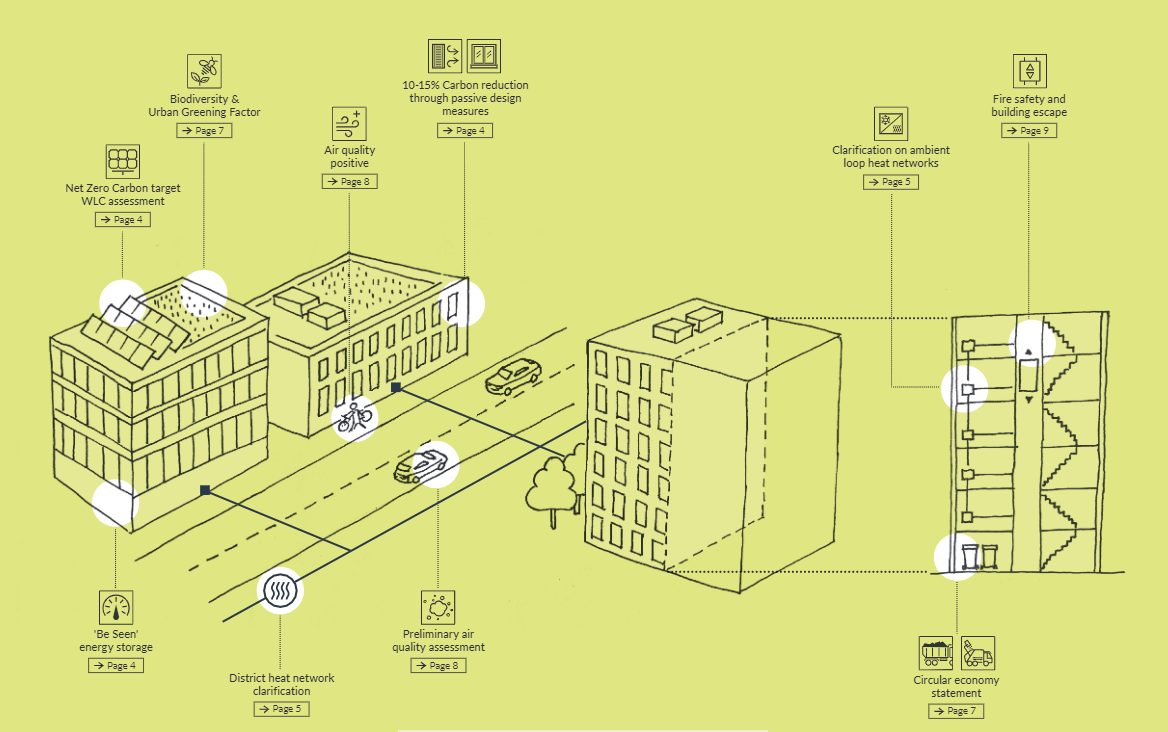Insights
Sustainability and safety: the GLA New London Plan.
What are the big changes?
The New London Plan (NLP) was officially adopted in March 2021.
The plan is part of the statutory development plan for London, meaning that its policies will inform decisions on planning applications across the capital.
It sets out a framework for how London will develop sustainably during the next 20-25 years and many policies in the plan are relevant to the city’s recovery from the Covid-19 pandemic.
Having been part of the consultation process, our firm has produced summary note that covers updates to a variety of policy areas. Below are the big headlines, which you can read in more detail within our summary note.
Whole Life-Cycle Carbon Assessment.
The new London Plan energy policies place a strong focus on the lifecycle impact of a development. One of the new requirements in response to this is a whole-life carbon assessment. The intention of the assessment is not only to measure emissions but also drive design and strategic decisions that reduce the whole life carbon emissions of the development.
‘Be seen’ energy monitoring guidance.
This requires developments to predict, monitor and report operational energy usage during in-use stages. This is a big update as operational energy was not regulated in any way prior to this. The new guidance recognises the need to close the ‘performance gap’ between design intent and actual building performance.
Further emphasis on district heat networks.
Individual heating systems, such as an ambient loop heat network, are not considered suitable for developments in the Heat Network Priority Area (HNPA). The HNPA sets out areas in London where the heat density is considered sufficient for communal heat networks to provide a competitive solution for supplying heat to buildings and consumers.

Circular Economy Statement.
In addition to the Whole-life Carbon Assessment, referable applications are also required to provide a Circular Economy Statement, which requires the development to commit to key performance indicators around material efficiency, waste generation, and diversion of waste from landfill, which will be used to verify as-built information post-construction.
Urban Greening Factor (UGF) calculation.
This will assess both the area of green areas but also the type of greening, and each local borough is expected to either adopt the GLA minimum thresholds or devise their own. Landscape design should form part of the early design brief to ensure opportunities for urban greening are explored and maximised where possible on site.
Biodiversity Net Gain.
Introduced to further encourage developments to manage impact on biodiversity and secure a net gain in biodiversity, this should be informed by the latest ecological information and addressed from the start of the development process.
Preliminary air quality assessment.
This is required to assess likely sources of pollution, likely site constraints, appropriate land uses and appropriate design measures to reduce exposure to poor air quality before design in order to inform the design process (which would sit outside of planning).
Air Quality Neutral, Air Quality Positive.
Neutral is to be demonstrated through an Air Quality Assessment, while Air Quality Positive (AQP) and will be required to be considered for developments within the central activities zone (CAZ), for larger developments subject to an EIA and for airport expansion projects. Further detail will be announced.
World Health Organisation (WHO) guidelines for particulate matter.
WHO guidelines are a more stringent target for PM concentrations to comply with. Given the background concentrations of PM2.5 across many Central London locations widely exceeds the WHO guidelines, this is likely to lead to more site-specific monitoring and design implications.
Fire safety policy, fire statement & inclusive design.
Development proposals are required to demonstrate the highest standard of fire safety is achieved through a variety of steps. All major development proposals should also be submitted with a Fire Statement, which is an independent fire strategy, produced by a third party, suitably qualified assessor. In addition, developments must provide safe and dignified emergency evacuation for all building users.
Need further information, or have questions? Read more here.
